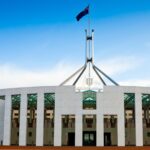The PSR isn’t the only worrying aspect of the audit and compliance program. How do GPs end up there in the first place?
Once the director of the Professional Services Review has decided to investigate you, a PSR committee will have an enormous amount of freedom to choose the evidence it collects, the evidence it pays attention to and how it forms its conclusions.
But what exactly happens before that to put a doctor in the PSR’s sights? What rules or guidelines does the Department of Health use to decide it suspects “inappropriate practice”? That information exists in a 64-page document, but we’re not allowed to see it.
Medicare monitors individual practitioners’ patterns of providing or initiating MBS and Child Dental Benefits Scheme (CDBS) services, and prescribing PBS items.
“This data is analysed to identify practitioners whose claiming varies from their peers,” DoH tells TMR. “Where this variance could be due to possible inappropriate practice, the Department may review a practitioner’s servicing under the Practitioner Review Program (PRP).”
A DoH adviser, who is also a health professional, identifies these concerns.
“In addition to claims data, other relevant information is also considered, including a practitioner’s location, patient profile/demographics, specialisation or special interests, additional training, and clinical relevance,” the department says.
But the DoH does not let anyone see the guidelines and rules for identifying the doctors who should be referred, saying it would not be in the public interest to “reveal the key methodology used to prevent fraudulent activity”.
Tip-offs are another source, and while these could come from members of the public, they might also come from a competing clinic that feels a doctor or clinic is making more than they should be. Tip-offs can be filed anonymously.
“Where concerns that the practitioner may be engaging in inappropriate practice are unable to be resolved under the PRP, a senior departmental medical officer, known as a Medicare delegate, may request the Director to review the practitioner’s or corporate entity’s provision of services,” the DoH says.
However, any concerns about billing patterns will largely be based on quantitative data. While the DoH says it takes other factors into account, GPs exposed to the process say in fact little consideration appears to be given to the context in which the item numbers were billed.
TMR knows of cases where female GPs have been pursued for doing too many pap smears, and a GP whose clinic was next to a nursing home who got in trouble for too many nursing home visits.
Context is all
This lack of context worries Dr Anchita Karmakar, CEO and founder of the advocacy and support group Australian Health Practitioners Advisory Solutions (AHPAS).
Dr Karmakar went through the PSR process and is now paying back an amount deemed to have been “inappropriately billed”. She took her case to the Federal Court, questioning the fairness and efficacy of the PSR process, and while the case was dismissed, it arguably spotlighted the need for changes to the Health Insurance Act 1973, the PSR’s enabling legislation.
“My main concern is they don’t do statistical profiling,” Dr Karmakar said. “They don’t take into consideration whether a doctor specialises in skin, or after-hours services or women’s health; they just randomly say that in such and such a place there are 100 GPs and among those, this person is billing much more than everybody else. It’s sticking out like a sore thumb so we’re going to investigate them.
“So, if they’re not statistically profiling, then those statistics mean nothing, and that’s one of the biggest problems.”
Getting DoH to elaborate on exactly how the department uses its algorithms and professional expertise to sniff out potential “inappropriate practice” is far from easy.
In February 2019, Dr Karmakar requested more information from the department under the Freedom of Information Act.
DoH was asked for information on how audits were initiated for specific item numbers, beginning with identifying doctors who were above certain thresholds, how these decisions were made, and what methods have been used to begin investigations of clinicians based on billing those items.
They were also asked about the guidelines given to the individuals who conduct these reviews.
However, the department refused access to the 64-page document that contained this information. The reason given was that disclosing the operational information, methodologies and procedures would jeopardise the department’s ability to protect the “integrity of Australia’s health payments system”.
This was because it would “likely reveal the key methodology used to prevent fraudulent activity” and would be against the public interest.
A blunt instrument
RACGP president Adjunct Professor Karen Price is also concerned about the way Medicare tries to identify cases of inappropriate billing, noting that the algorithms are “very blunt”.
“If you’re going to look at quantity, then why aren’t you also looking at the doctors who are not ordering any tests? There’s a whole problem in the way this data is analysed and it’s certainly concerning to me that Medicare has now become so unworkable that you need a law degree to interpret it.”
Sydney-based Dr David Szekely is yet another healthcare professional to be concerned about the lack of context in Medicare’s methodology.
Dr Szekely, who earlier this year joined AHPAS as its director of data science and risk mitigation, designed his own software product – known as GP Clarity – to tackle the problem. Subscribers to the service receive a personalised Medicare compliance report, based on their own data.
“[In developing GP Clarity] what I’d do, in consultation with GPs, is set out a list of statistical analyses which take all these factors into account – like how many days the doctors work, the demographic for the doctors seeing, and is there, for example, a lot of mental health issues in the demographic,” he said.
“I’d then use those [analyses] to identify doctors. Algorithms assign a risk score for every part of the doctor’s practice that the PSR uses to identify inappropriate practice.”
Lack of appropriate GP education is one of the most significant problems, according to Dr Szekely.
“There’s a reason we have speed limit signs on the roads – it’s so people can know how fast they’re allowed to go at any one time,” he said, “but there’s no similar system for doctors – they’re not told how many antibiotics they can prescribe in a month without raising the flags.
“Theyshould be able to see they may be a statistical outlier and then make a determination about how theywant to practice. But that information is not available at the moment, and that’s the impetus for me building the software.
It’s technology that shows doctors their own compliance statistics – it’s the missing link – but it’s a service that should really be provided by Medicare.”
Our next feature on the PSR will look at one doctor’s fight to get his evidence accepted by the committee.







